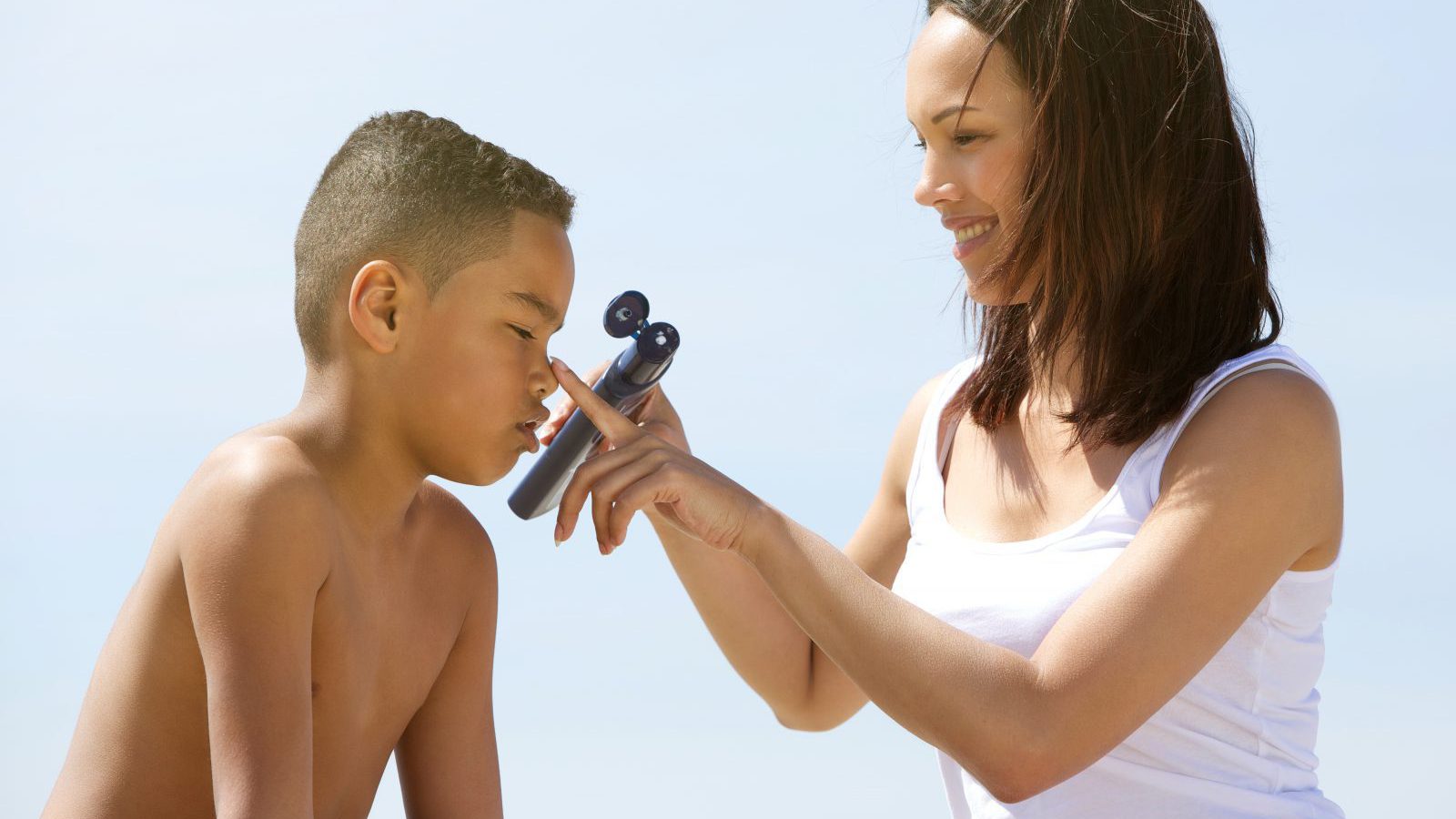Q. Dear Umbra,
I read an article recently about a study that showed that sunscreen (specifically oxybenzone) can do tremendous damage to coral reefs, even in tiny amounts. Are there effective sunscreens that don’t contain oxybenzone that will still keep me from getting skin cancer?
Ben S.
Washington, D.C.
Dearest Ben,
The season of outdoor frolicking is upon us, hooray! But let’s put down our picnic baskets for just a moment. Before we all go revel in the sunny rays, we’d do well to follow your lead and carefully consider that summertime essential, sun protection. Are there any goops that will safeguard our skin while still playing nice with the oceans? Happily, the answer to this burning question is: Yes!
First, a little refresher on why we need sun protection in the first place. As lovely as sunbeams feel after a long winter of dreary skies, they’re actually attacking us with a two-pronged weapon: UVB rays (the skin burners), and UVA rays (the wrinklers). Both contribute to skin cancer, so your best shield is broad-spectrum sun protection. These come in two forms: chemical sunscreens, which sink into your skin and absorb the sun’s rays, and physical sunblocks, which sit atop your skin and deflect them. It’s the chemical products that pose the most danger, to us and to the coral reefs.
About half of the popular chemical sunscreens out there contain oxybenzone, a substance that helps the other ingredients penetrate your skin. And you’re right to be concerned about its environmental impact, Ben: A recent study has indeed linked oxybenzone from washed-off sunscreens to damage to coral reefs, including increased bleaching (when corals kick out the friendly algae living inside them, thereby turning white). Researchers have found that as little oxybenzone as the equivalent of one drop of water in six Olympic-size pools is enough to damage the reefs. Picture all the greased-up swimmers, divers, and surfers at your typical beach on a nice day — plus everyone showering their sunscreen off into wastewater that frequently ends up in waterways — and you can bet there’s a lot more than a drop of oxybenzone floating around.
Why do we care about coral reefs? These colorful underwater sculpture gardens are more than a place to find Nemo: They’re tremendously valuable ecosystems. Among their many charms, they protect the coasts from erosion and storms, give us ingredients for new medicines, serve as hotbeds of ocean biodiversity, and prop up the fishing industry, not to mention bringing in boatloads of tourism dollars. The National Oceanic and Atmospheric Administration estimates coral reefs provide the world with $30 billion of benefits per year. But these tropical paradises are stressed out. Everything from bottom-trawling to polluted runoff is threatening their health, with warming oceans from climate change one of the biggest problems of all — we’re currently in the midst of the third-ever global coral bleaching event brought on by record-high ocean temps. The least we could do for these besieged reefs is adjust our sun protection habits.
Even if you don’t give a fig about coral, there are personal reasons to skip oxybenzone, too. It’s one of several questionable chemicals frequently found in sunscreens that has been linked to skin irritation and hormone disruption. Not the sort of thing I’d be rubbing into my largest organ (that’s the skin, people) if I had a choice about it.
Luckily, we do! Remember those physical sunblocks from a few paragraphs ago? These formulas, usually based on zinc oxide or titanium oxide, are a better choice. They’re not associated with any skin penetration or hormonal shenanigans, and they’re very effective at blocking UV rays (as long as you reapply frequently, as with any sun protection product). Physical sunblocks have earned something of a bad rap for being extra-gloppy and opaque, but if you’re not a fan of the mime look, Ben, fear not — new formulations have gotten lighter and much more translucent. Check out the Environmental Working Group’s ever-useful guide for help picking out a brand.
And before I let you go gallivanting about under the sun, please remember that sunblock is only one part of your SSSS — that’s your Smart Summer Sun Strategy. Avoid the sun at midday, wear sunglasses and a wide-brimmed hat, and cover up with light, long-sleeved layers (consider wearing UPF-treated clothing for extra protection). Okay, that’s it — frolic away!
Ultravioletly,
Umbra



